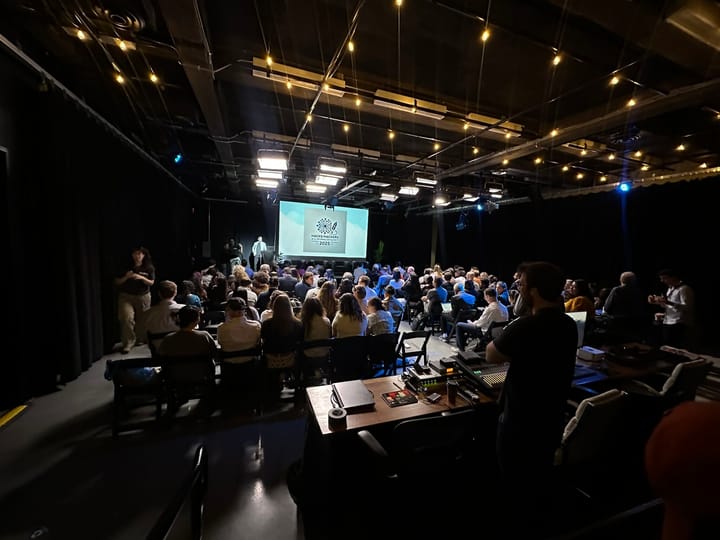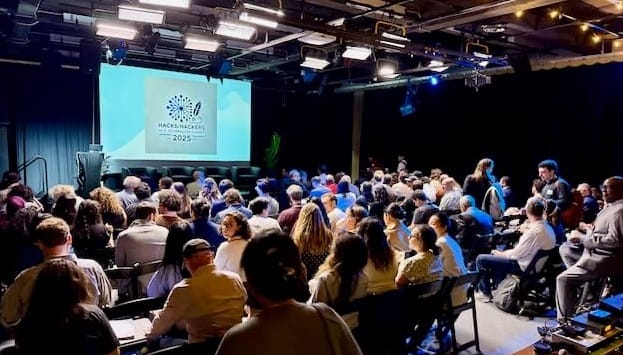Saying goodbye to Hacks/Hackers Hong Kong
by Cedric Sam
Hello hacks and hackers! I’ve had a grand time organizing Hacks/Hackers Hong Kong with my co-organizers Jane, Olivia, and Darcy, since we founded the group in 2013.

(Shout-out to Yolanda, who first got in touch with the organization, and all of our participants throughout the years, including super-dedicated Isao, who flew in three times from Nagoya to attend!)
It’s been a fun ride, but I’ve now moved to New York. So if you want to be the next Hacks/Hackers convenor in Hong Kong, feel free to email me at cedricsam@gmail.com, or to get in touch directly with the Hacks/Hackers organizers!
Hong Kong is Asia’s biggest financial center and the regional hub for many international media, and home to a thriving and innovative local media. Our journalism schools are full of talented and motivated students ready to push the limits of technology to tell stories. We just hosted an event on last month at Bloomberg’s office in Hong Kong. It was only the second event of 2016, but boy was it packed! For the occasion, we featured four speakers over the span of two hours:
Marc Lajoie, China Daily Asia

When I met Marc in a Hacks/Hackers event in Montreal, around three years ago, he was just back from China with a master’s degree in multimedia journalism. Since then, he went on to work with a budding team of coder-journos at the WSJ in Hong Kong, and in early 2016, he joined China Daily Asia as senior multimedia reporter, in charge of building special projects branded “Red-Letter Projects”.
Marc’s new project “Bhumika Can Speak For Herself” on Bhumika Shrestha, a prominent transgender activist from Nepal, just came out the day of the event. His highly innovative project combines artificial intelligence, natural-language processing services to create a seamless experience where an interviewee listens to your questions and tries to answer the best she can.
In July, Marc travelled to Nepal to meet with Bhumika, shooting interviews with her. Back in Hong Kong, he cut the interview into short video segments. Marc trained an AI to select the segments that best answer the user’s question (asked in spoken English). The video segments are then combined on-the-fly into an answer and played. The projects uses IBM’s inexpensive Watson Services to parse and classify user questions. The end experience is the most clever news multimedia project I’ve seen coming out of the region, combining available technologies to serve the story.
Daniel Moss, South China Morning Post

Dan is a Digital Producer in the interactive team at South China Morning Post (SCMP). We overlapped for a few months at the SCMP when he had just moved from Australia, working in news for Fairfax Media and start-up news organizations.
The work from Dan and his team of journalists and coders appeared on our radar as we were organizing this event, and it was impossible not to invite members of the SCMP to come tell how they did it. The main piece is a multimedia experience on Hong Kong’s Chungking Mansions. The longform combined text, graphics, moving images and full-on video, and the work of a dozen people within the organization.
Partly playing the role of the “glue” that puts things together (it’s more than that), Dan was also interested in discussing how he worked with different parts of the newsroom to create such project — how things came about a couple of months ago and how the parts coalesced together into a coherent story told online, but also in the pages of the SCMP broadsheet.
He also talked about Legco Widgets, a project made for one of Hong Kong’s major electoral event. It was one of their team’s experimentations with interactive widgets that they insert into stories (and the challenges of getting editors to remember to insert them).
Muyueh Lee, a builder of data visualisations

I met Muyueh around two years ago, when he was travelling to Hong Kong from his native Taiwan. Muyueh comes from a business administration background, but he is definitely one of the most talented creative coders in the region. One of his most well-known pieces of work is Green Honey, a scrolly visual comparison of how colours are named in the English and Chinese languages.
Muyueh’s work focuses on building data dashboards for major corporations in Taiwan, including banks and presidential election campaigns (like that of Tsai Ing-wen). During his talk, Muyueh talked about the important distinction between visualising for analysis and visualising for storytelling:
After talking about Muyueh’s tremendous work, we segued into open data and the vibrant community in Taiwan, one of the largest in the world, led by community organizations such as g0v.tw. Democracy (and unpopular governments) might have led politicians and people in power to give back more useful data to the people, who in turn have built important applications for the citizenry.
Taipei will soon have a new Hacks/Hackers group, led by Silva Shih of the FT and Kirby Wu. Their first event is about QGIS on October 16 and the speakers will be Jeremy C.F. Lin and Mimi Chen.
Robin Kwong, Financial Times

Robin now runs special projects at the FT in London. But who would have thought, for someone who started off as a political reporter at the South China Morning Post in the mid-2000s? Somehow, one thing led to another and he relocated to Taiwan with the FT, eventually became the FT’s tech editor, and became an interactive data journalist in 2014-16. He coordinated some projects, and even coded his own.
We were lucky to have him, as we just found out that his company had posted him in his hometown of Hong Kong for a month, and that that would overlap with our event.
In a conversation prior to the event, we both expressed our interest in the intricacies of production and putting the right people together to create innovation. When the workflow is or was aimed towards paper or the traditional methods of news production, how to extirpate your resources to make something new? “Often the biggest barriers to doing useful and cool things (especially in a big news org) is not a lack of technical skill, but how digital teams are organized and integrated into the newsroom”, Robin says.
Robin adds: “No one wants to be a ‘service desk’, and it’s tempting to try to avoid that fate by carving out your own space and essentially to become a standalone silo within the newsroom, but I argue that much greater gains could be made if we could build bridges rather than walls. For that to happen you need people with credibility within the wider newsroom to champion the digital team and to help captain projects that involve both digital and ‘traditional’ journalists.”



